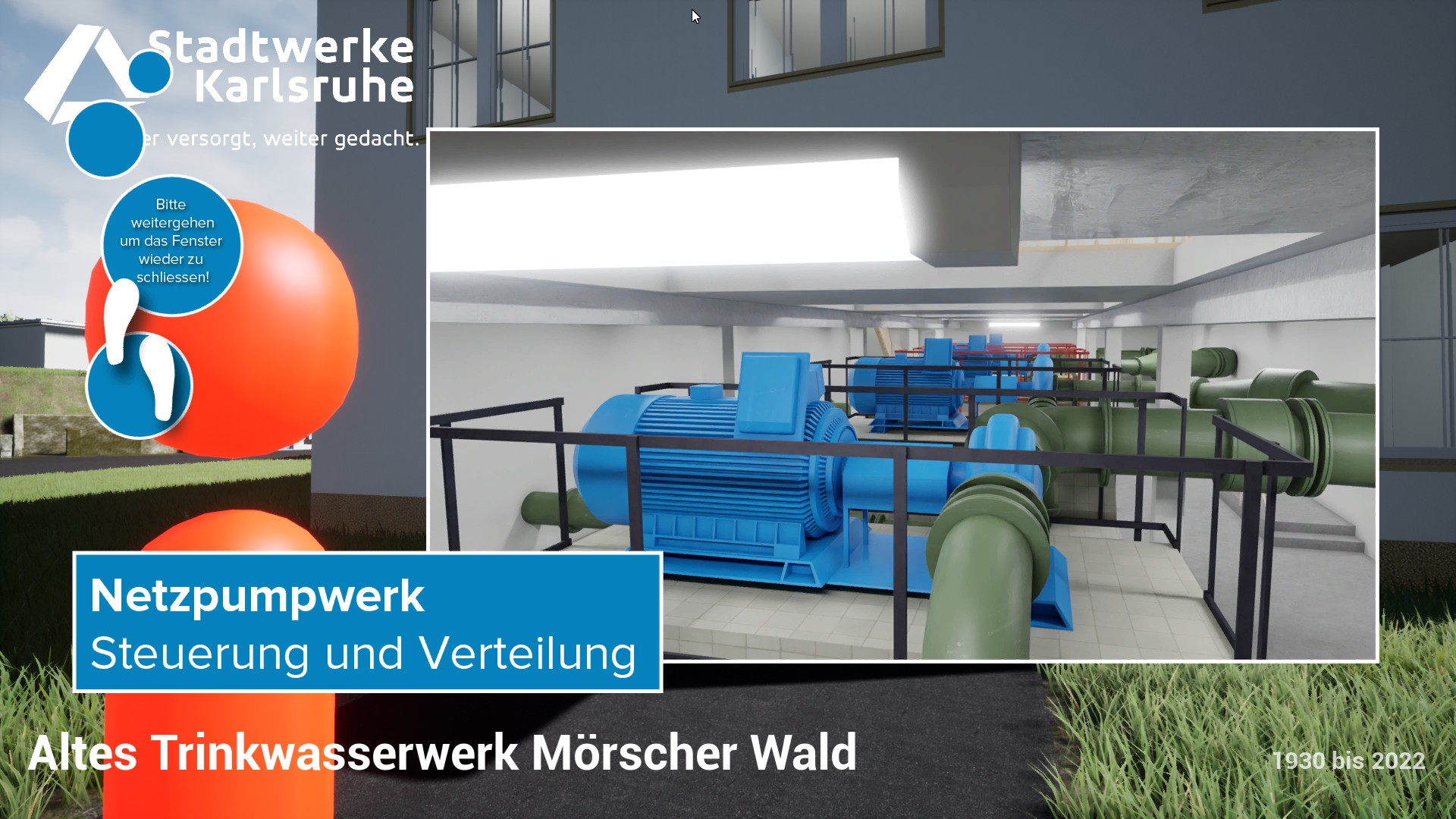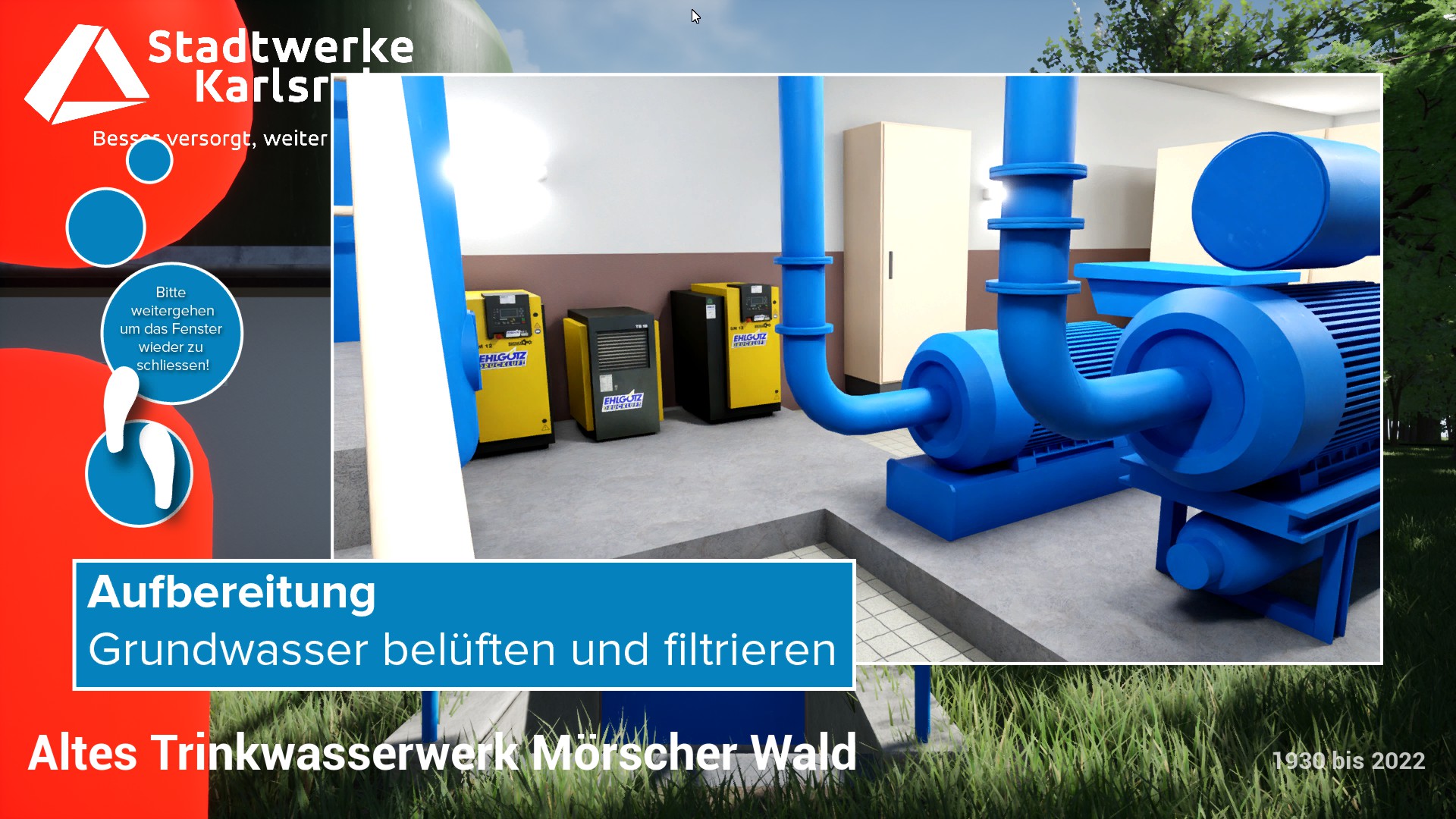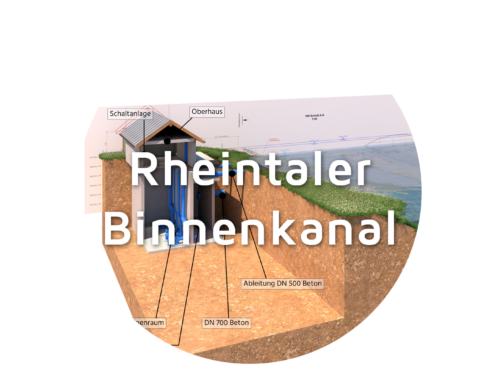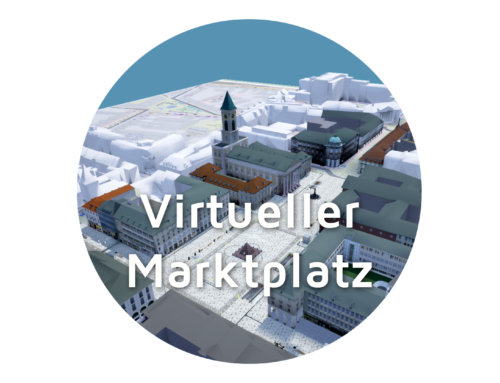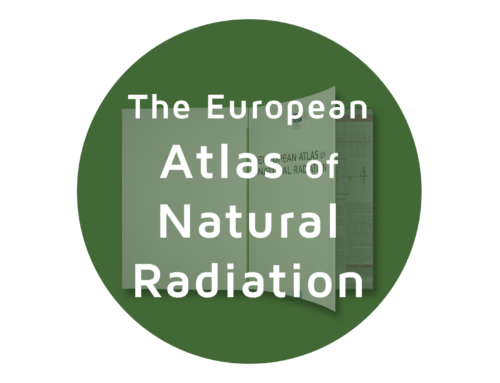Client: Stadtwerke Karlsruhe 2021/22
The old Moersch forest drinking water plant, which was scheduled for demolition, was to be digitally reconstructed as an installation for the planned new waterworks for the Karlsruhe region. The focus was on realistic rendering with real textures. Based on existing laser scan data and construction plans, the most important parts of the old waterworks were reconstructed in 3D. The relevant parts are: Well and groundwater extraction, treatment by means of aeration and filtration, storage, distribution by means of mains pumps, sedimentation tank and residual sludge treatment.
Four specifications set the task apart:
- The project served as an accompanying part of the training for the trainees of the Stadtwerke (municipal utility). After the trainees were given initial training on modelling with Blender, they created numerous assets for the model.
- The model data created was handed over “openly” to enable the Stadtwerke to continue maintaining the 3D model. The Stadtwerke provided the trainees and some employees with the Blender software, so that their own post-processing and creation of further renderings can easily be done on site.
- For modelling, Blender was used instead of 3ds Max, the programme usually used by mach:idee. This meant that mach:idee also enjoyed a phase of familiarisation and learning. A detailed paper on the topic “Practicality of Blender?” is currently being written and will be published shortly.
- The virtual walk-through environment was created with Unreal and can be operated using the in-house control system developed by us. In addition, a PS5 controller was used. Unreal is a game development application that is free for use with restrictions and has been used by mach:idee for many years.
The final application will be permanently installed in the exhibition area of the new drinking water plant and can be viewed there.
The 3D project was created almost entirely with the open source software Blender. Here, however, some restrictions had to be observed with regard to the size of the scenes, as the PCs available only met the requirements for large 3D models to a limited extent. For example, we did without complex shaders and detailed vegetation.
Many thanks in this context to Blender specialist Artur Lies, without whom the whole project would certainly have taken twice as long..
And of course a big thank you to the Blender Foundation – it’s amazing what you’ve done with an open source tool.
rm
Model information
- Modeling with Blender version 2.93.2
- Objects in the total scene: 1153
- Edges 12.059.869
- Faces 6.327.806
- Triangles 9.857.451
- File size 794 MB
- Textures 2.08 GB
- Output size rendering 1920 x 1080 pixels
- Render engine cycles
Software
Blender version 2.93.2 – https://www.blender.org/
Unreal Engine 4.27 – https://www.unrealengine.com/
Scene 2go, viewer software laser scan data Faro – https://www.faro.com
Global Mapper GIS – https://www.bluemarblegeo.com/global-mapper/



